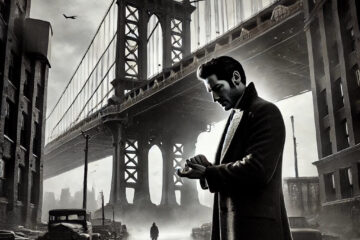Paintings by Janie Alexander
“A General View of the Falls of Niagara” and “The Great Horseshoe Fall, Niagara” are paintings both created by Alvan Fisher in the year of 1820. During this time in American history, the country was still young and there were many changes being made within border lines and territories. The main event that happened during the 1820’s however, was the Missouri
Compromise. The Compromise dealt with two new states being added to the Union, declaring Missouri a slave state and Maine as a non-slave state, ensuring that the north and south were equally balanced. Compromises like these led to opening up the country for settlement, yet it also led to conflicts among each other. These two paintings portray both the good and bad aspects of the country and how the country came to have success.
When one first looks at these vibrant paintings, the eyes first land on the white crashing waves that pound as they descend to the bottom of the falls. The power of the waves and the water falling is there to clearly symbolize the potential power of a new nation that will continue to grow and thrive. Surrounding the crashing waves are dark green trees and landscape that are harder to see yet bring out the brightness of the water. The darkness is there to represent the unknown of the future world to come. This reflection upon the young nation creates suspense, yet also excitement, for the new beginnings of the developing United States.
Compared to the huge and breathtaking landscape, the humans in the foreground look tiny and inferior. During the age of discovery, this massive new land that had just been found felt gigantic when encountered by the pilgrims. As the storm rolls in from the right side of the “General View” painting, the conflict surrounding slavery is also rolling into the country. At this time, slavery was the main issue tearing the country apart. The storm clouds display the anger and frustration the citizens had for each other. In the end, a resolution was made, which is symbolized by the rainbow that appears on the other “Great Horseshoe” painting. There were many compromises made in working through the conflict and at the end of the war, there truly were some accomplishments and things to be proud of, such as the emancipation of slaves.
In conclusion, the two paintings of Niagara Falls reflect on the power that the young nation will become, the great big world that surrounds us as human beings, and the unknown that is yet to come.
Paintings by Sarah Kate Jordan
As the generic saying goes, big things can come in small packages. When I saw Pigeon’s Egg Head Going To and Returning From Washington painting in person, I remembered why it had such an impact on me when I first saw it in the Ivy classroom. Growing up in a very southern community in south Alabama, I felt as if I lost a good amount of my southern personality, or just my accent in general when I moved to Atlanta. I started to dress, talk, and act differently. Over the years, I became way more city than my young self ever thought was possible. If my seven-year-old self and my present personality could talk, they would realize they are complete opposites. I believe this is why this image had such an impact on me. After the white American settlers moved into the Native American Indian territory, the natives had no choice but to conform to their societal standards. It was either become like them or get crushed Jordan 2
by them. I remember coming to this realization in class and just feeling sympathy and empathy for the Natives.
Seeing this piece of art in person made me realize how much time and effort was invested into this intricate painting. From the feathers on top of the left Native’s head to the elegant fan in the hands of the left Native American, every detail means something and tells a story. The colors pop off the page, which makes this piece stand out compared to some of the other paintings with just earthy-toned acrylic paint. I also noticed that the light shines down, or the highlight of the image is on the left side. This painting does an excellent job at the theme of light versus darkness. The Indian going towards Washington is his true authentic self, while the one returning from Washington has been corrupted, or changed by the white man’s society’s criteria.
This painting made an impression on me not only in person but in the classroom. I relate to the feeling of conformity when in a new environment. Unfortunately for the Native American Indians, they had no choice but to conform, so they could survive. From the fine strokes of paint to the bright and rich colors, I could stare at the Pigeon’s Egg Head Going To and Returning From Washington for hours. Seeing this piece in person reinforced all of these realizations.
Picture by Judson DiVenere
On Saturday, we visited the Smithsonian American Art Museum in D.C. The museum houses some of the greatest American art ever created ranging from super early pieces from when the United States wasn’t even founded, to pieces dating to last year. Also contained inside the museum lies the Nation Portrait Gallery. It gives an intimate look into contemporary lives, facing modern problems as well as presidential portraits and portraits in abstract form or photographs.
I saw this photograph from 2020 that popped out at me. The first thing I thought is that it gave the vibe of this TV show I finished called Euphoria. The show breaks barriers and is more targeted toward girls but I still really enjoyed and related to it in some ways. The photograph was taken by Keegan Holden as a part of his “Mutual Recognition” series where he takes a photo of a random stranger and lets the viewer reflect and think about it. In the rest of the “Mutual Recognition” series that is found on Holden’s website, this photo is the only one that significantly stands out. The rest are of special people, but just in ordinary clothes with nothing that stands or pops out. This photo is of Firefly, a skateboarder on Venice Beach. Initially, I thought the photo was taken in the 1960s because of the hippie and extravagant pieces that Firefly is adorned with. In the background are just some normal skater dudes with shorts and t-shirts on. Firefly has on matching checkered skate shoes and socks, sweatshorts with dangling jewelry pieces, something that seems inspired by Indian clothing, a top with shiny jewelry, two necklaces, jewelry under her eyes, and braided hair. She is also holding her skateboard. The background boasts the iconic line of palm trees on the boardwalk. Since its conception, skateboarding has boosted individualism beyond its boundaries in the sense that anybody can skateboard, anybody. Someone can pull up to a skate park with a board and automatically make tons of new friends. It’s a lovely movement that I’m trying to be a part of but I still can barely balance on a skateboard.


